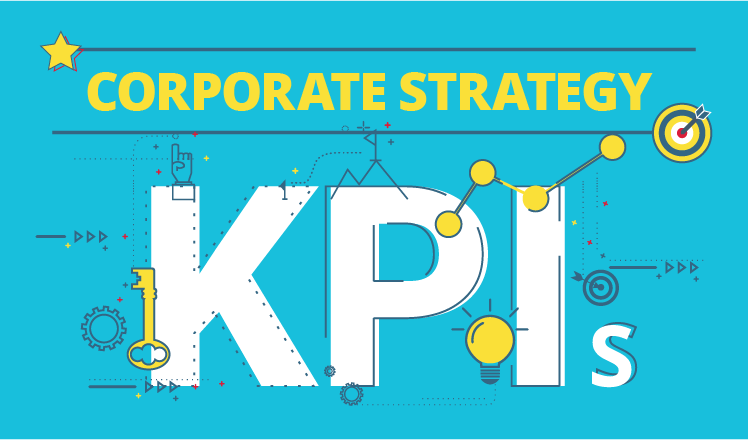How to translate a corporate strategy into KPIs
Imagine a spine-chilling scenario: a corporate strategy that was supposed to bring a company to success, lies on a shelf forgotten by its creators and collects dust. At first glance, this scenario is unlikely, as a strategy is the cornerstone of any business. However, BI consulting practitioners have the opposite opinion: this is exactly what happens if a corporate strategy is not supported with the right KPIs.
A strategy may be brilliant, still its execution is likely to fail if the team lacks understanding of how their daily efforts influence the final target. Besides, if a company does not reflect its strategy in KPIs, it is easy to lose focus and step aside, especially at the very beginning when the progress is not obvious. Without right KPIs, a company may lack focus in its actions and consistency in its messages and activities.

Defining KPIs metrics: examples of doing it right and wrong
Let's take a look at a great real-life example. In 2015, Walmart was brave to declare their intentions publicly through posting their 3-year growth plan on their website. Together with a simple and straightforward goal of turning omnichannel and delivering a seamless shopping experience at scale, Walmart indicated the target of $45-60B new sales to measure the success. Besides, Walmart indicated 5 growth areas and listed relevant KPIs for each.
Thanks to KPIs, Walmart ensured that everybody spoke the same language, understood the priorities, and knew how to measure the progress. For example, Delivering value goes with price leadership and private brands KPIs; the strategic objective of Providing convenience aims at e-commerce, online grocery and smaller formats; key geographies are narrowed down to the North America and China.
Unlike Walmart, companies usually leave their targets for internal use only. However, it does not mean that they fail to set the right KPIs. For instance, Procter and Gamble also published their strategic objectives, albeit with no targets indicated on their website. At the same time, it is clear that the company did a great job of defining KPIs, such as operating total shareholder return for the Value creation strategy, the number of product categories under focus for Portfolio transformation, etc.
However, even large and well-known companies can make mistakes. Wells Fargo's notorious case is an example. The bank selected cross-selling as one of their strategic initiatives and developed a relevant motivation scheme with a catchy slogan Eight is great. The idea was to incentivize the employees to reach a target of 8 products sold per customer. Years later, it turned out that Wells Fargo chose a wrong KPI. The KPI motivated to boost sales, even if it did not increase the revenue. Besides, it was widely unrealistic, and employees opened 2 million fake accounts to reach their targets.
How business intelligence helps
Let's find out how business intelligence can help while defining and executing a company's strategy.
BI for defining a strategy
In a market economy with numerous players, companies tend to choose strategies that will strengthen their competitive advantages. Naturally, the first step is to identify these. At such an important stage, what matters is a fact-based opinion, not a gut feeling. To get much-needed insights, companies should analyze both internal and external data. Market research findings coupled with historical data reveal trends and opportunities to seize. For example, a FMCG manufacturer would be able to choose the markets to expand, customers' behavior at those markets, the best-fitting product portfolio to offer (say, organic food).
BI for setting KPIs
Once a strategy is approved, the next stage is to define KPIs that will be challenging yet attainable. To do this, business analysts go for historical data analysis and forecasting. Besides, business analysts should develop a hierarchy of non-conflicting KPIs: company-based, departmental and individual. With a hierarchy of KPIs, everybody will focus on their piece of work, but all team members will be working towards a common goal. For instance, the NASA brilliantly put this principle into practice: when John F. Kennedy asked the NASA's janitor about his job, the latter replied, 'I am helping to put a man to the moon.'
BI for progress monitoring
When KPIs are defined and communicated to the team, performance monitoring starts. Comparing targets vs. facts and tracking the progress is essential to understand how the company advanced in executing its strategy. To make this monitoring possible, business analysts should develop a set of reports and dashboards, identify how often end users need each report, and what data (input and output) should be there. You are welcome to check our BI demo to see how such dashboards may look like.
To sum it up
Any company should support its corporate strategy with the right KPIs and constantly track the progress. Otherwise, a strategy execution is likely to fail. At all stages of strategic management, business intelligence consulting can bring the synergy. For instance, a company can benefit from data analysis services that are helpful to define a corporate strategy, set the right KPIs and monitor the progress.

